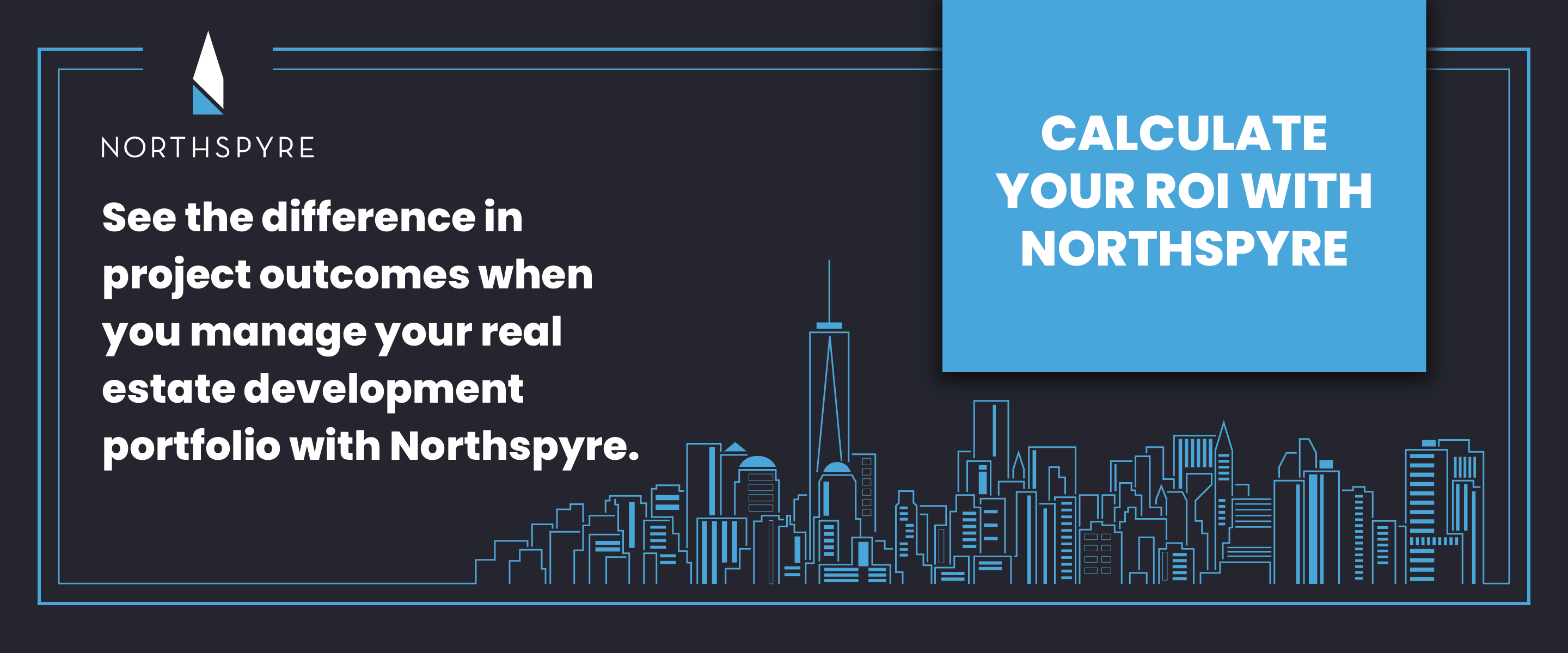How to Compile your Draw Request Package 75% Faster
At the end of every month, do you find yourself nose-deep trying to find all the invoices, budgets, receipts, lien releases and change orders needed to compile your monthly draw?
It's often the development team's responsibility to secure all project documentation from the contractors and suppliers and aggregate it all into a draw package. With these packages ranging anywhere from 50-500 pages, this ends up taking more time than many project teams care to admit.
While the draw process is an integral part of real estate development, the time spent putting it together means less time paying attention to how the funds are being spent and missed opportunities to cut costs on your projects.
In fact, the average time it takes to put together reports on a project is 54 hours a month, which adds up to 654 hours every year for each of your projects! That's nearly a month of your team's time spent in document wrangling.
How much more value could you be getting out of your projects if that time was spent focusing on strategic decisions?
The Average Workflow for Developers
Before we get into how you can save time, it's important to understand the low-value tasks your team is spending much of their time on. Below, we've broken down the average workflow developers complete on a monthly basis:
- Reach out to anywhere between 30-250 vendors to send monthly invoices
- Collect invoices and file them accordingly in a server or file cabinet
- Enter the data from each invoice into your project tracking and vendor summary spreadsheets or send them to your accounting team to take on
- Manually enter new contracts into spreadsheets and file them accordingly
- Identify and fix contracts and budget lines with overruns
- Analyze project financial performance
- Compile funding package of invoices and overview reports
- Fill out and send lien waivers for all vendors to be paid
- Collect and review lien waivers
- Manually scan 50-500 page funding packages
- Resolve spreadsheet errors, inconsistencies, reconciliation, and any other issues identified
- Upload funding package to server/dropbox
- Manually enter data into accounting systems
- Update spreadsheet and recompile package based on change requests from financial partners and managers
- Re-scan funding package and re-upload to server and share via email to partners
- Funding partners approve monthly funds to project
- Input costs into the accounting system to cut checks
Compiling a 500-page draw request for a large, complex development often takes teams over two weeks. This doesn't account for the time spent on the back-and-forth with senior leadership or financial partners (due to manual data entry errors, compilation mistakes like missing backup, or spreadsheet errors that occur as the funding request is compiled). If these discrepancies aren't resolved in a timely manner, vendor payments are delayed. This results in unhappy and unpaid vendors deprioritizing your project, stopping showing up to the site, and causing significant - and costly - delays.
Taking a step back, it's easy to see how your team is bogged down each month with repetitive administrative tasks instead of being the strategic decision-makers you hired them to be. When your most valued employee’s heads are down in paperwork, decisions that may lead to lower costs and a better overall project outcome get missed.
It's no surprise that compiling your draw request faster is crucial to an optimal project delivery process.
How to Compile Your Draw Request Faster
The solution is simple: Automation.
There is technology that exists to help you centralize all real estate project data, including all invoices, proposals, contracts, etc, and aggregates all of that data into easy-to-understand dashboards and reports. Solutions built for real estate development teams will include draw request automation.
Automation is widely used in most industries that require manual data entry tasks, yet the commercial real estate industry as a whole hasn't adopted the technology as a standard yet. And while automation may sound complex, for real estate development, it just means that all of your project data can be collected via simple email-based workflows.
For example, the technology syncs with your current email-based workflows to capture incoming documents like invoices, contracts, proposals, lien waivers, and vendor insurance certificates, then extracts the data from those documents and queues them up for your approval. With all available project data existing in the system, draw request tools are able to view your budget, understand where financing is needed, and compile an easy-to-understand draw request.
That's it.
So instead of spending hours and hours compiling data and putting it into a nice-looking, clean draw package, you're able to do it in seconds. It's easy to see how development teams that adopt automation technology will become more agile and have more time to focus on high-value, strategic decisions.
What kind of project savings and returns can you expect when you reduce your team's admin work and allow them to focus on their core competencies? Check out Northspyre's ROI calculator to see how much you could save by bringing automation, AI and analytics to your real estate projects.


